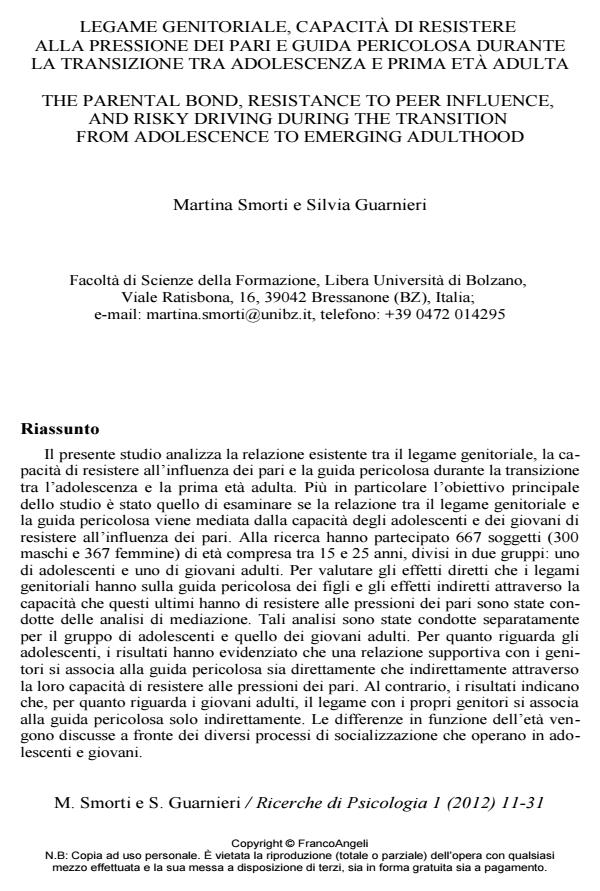The parental bond, resistance to peer influence, and risky driving during the transition from adolescence to emerging adulthood
Journal title RICERCHE DI PSICOLOGIA
Author/s Martina Smorti, Silvia Guarnieri
Publishing Year 2013 Issue 2012/1
Language Italian Pages 21 P. 11-31 File size 673 KB
DOI 10.3280/RIP2012-001002
DOI is like a bar code for intellectual property: to have more infomation
click here
Below, you can see the article first page
If you want to buy this article in PDF format, you can do it, following the instructions to buy download credits

FrancoAngeli is member of Publishers International Linking Association, Inc (PILA), a not-for-profit association which run the CrossRef service enabling links to and from online scholarly content.
The present study examined the relations between the parental bond, resistance to peer influence, and risky driving during the transition from adolescence to emerging adulthoood. Specifically, the mediating role of resistance to peer pressure in the relationship between parental bond and risky driving was examined. The sample comprised 667 subjects (300 males and 367 females), aged from 15 to 25 years, divided into two groups: one of adolescents and one of young adults. Mediation models were used to assess the direct and indirect effects of the parental bond on risky driving among adolescents and young adults through assessment of their ability to resist peer influence. These models were examined separately for adolescents and young adults. Findings for adolescents showed that a supportive parental bond was directly and indirectly associated with risky driving, as measured by resistance to peer influence. On the contrary, results for young adults indicated that the parental bond was only directly associated with risky driving. Age differences are discussed on the basis of the different cultural and parental socialisation processes that operate for adolescents and young adults.
Keywords: Parental bond, peer influence, risky driving, age differences.
Martina Smorti, Silvia Guarnieri, Legame genitoriale, capacità di resistere alla pressione dei pari e guida pericolosa durante la transizione tra adolescenza e prima età adulta in "RICERCHE DI PSICOLOGIA " 1/2012, pp 11-31, DOI: 10.3280/RIP2012-001002